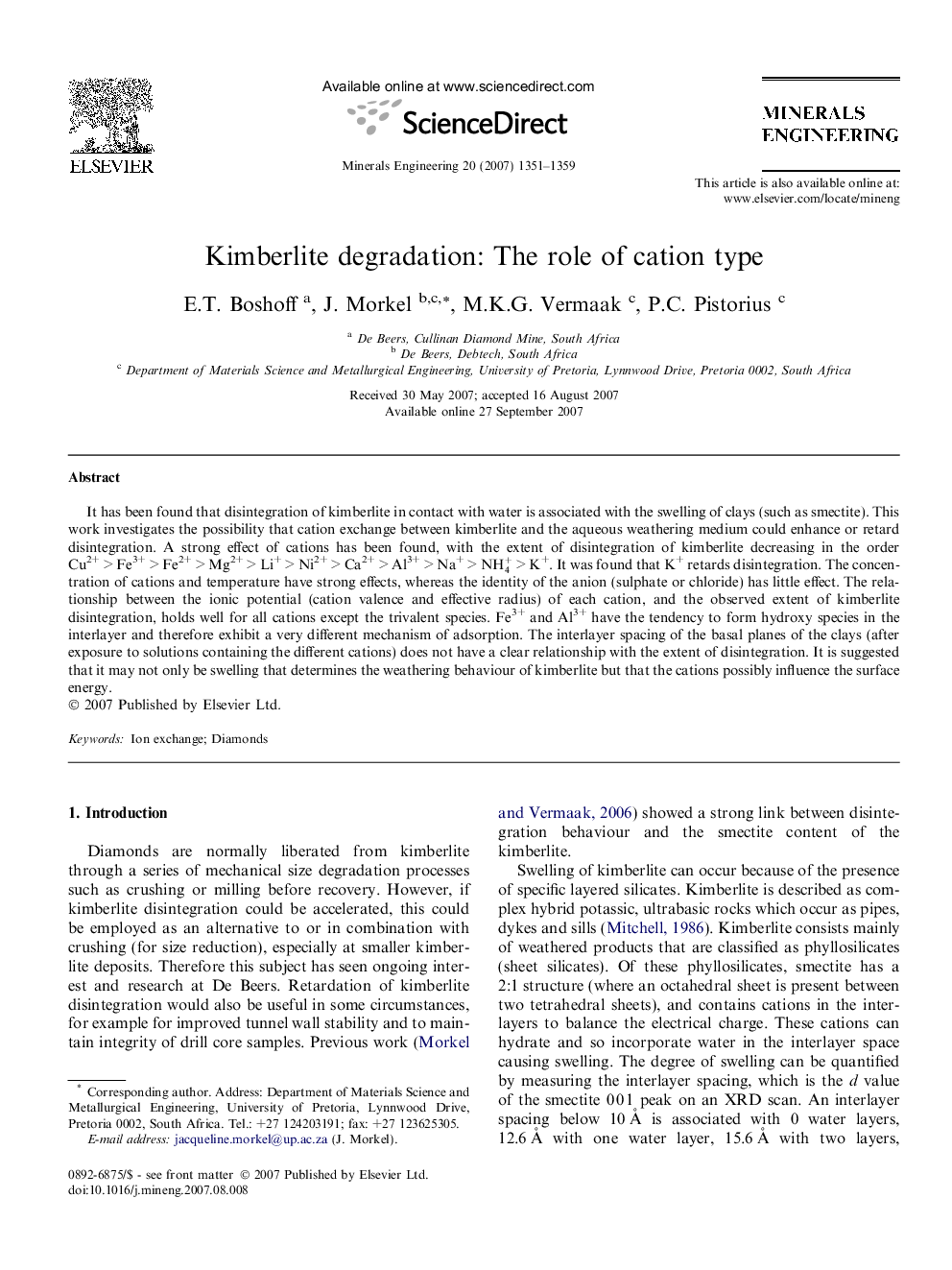| Article ID | Journal | Published Year | Pages | File Type |
|---|---|---|---|---|
| 234442 | Minerals Engineering | 2007 | 9 Pages |
It has been found that disintegration of kimberlite in contact with water is associated with the swelling of clays (such as smectite). This work investigates the possibility that cation exchange between kimberlite and the aqueous weathering medium could enhance or retard disintegration. A strong effect of cations has been found, with the extent of disintegration of kimberlite decreasing in the order Cu2+ > Fe3+ > Fe2+ > Mg2+ > Li+ > Ni2+ > Ca2+ > Al3+ > Na+ > NH4+ > K+. It was found that K+ retards disintegration. The concentration of cations and temperature have strong effects, whereas the identity of the anion (sulphate or chloride) has little effect. The relationship between the ionic potential (cation valence and effective radius) of each cation, and the observed extent of kimberlite disintegration, holds well for all cations except the trivalent species. Fe3+ and Al3+ have the tendency to form hydroxy species in the interlayer and therefore exhibit a very different mechanism of adsorption. The interlayer spacing of the basal planes of the clays (after exposure to solutions containing the different cations) does not have a clear relationship with the extent of disintegration. It is suggested that it may not only be swelling that determines the weathering behaviour of kimberlite but that the cations possibly influence the surface energy.
